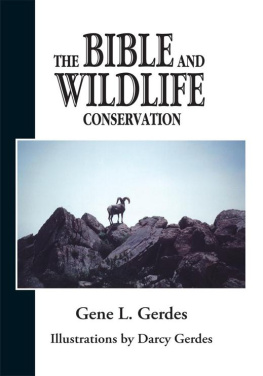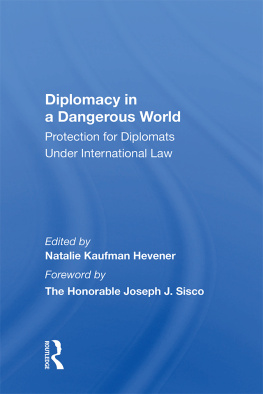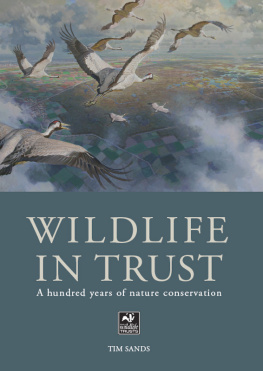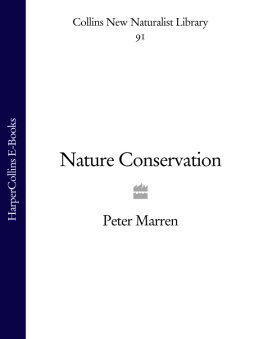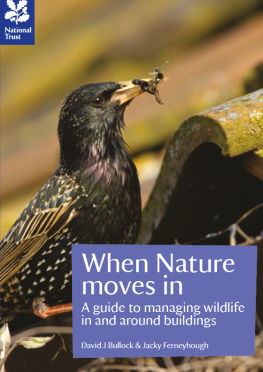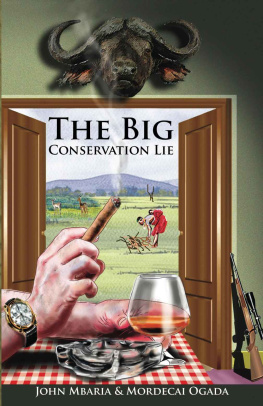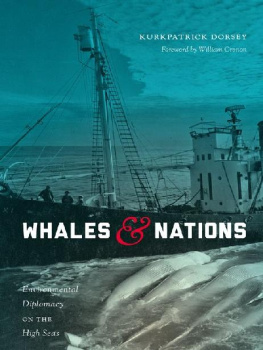The Dawn of Conservation Diplomacy:
U.S.-Canadian Wildlife Protection Treaties in the Progressive Era
has been published with the assistance of a grant
from the Weyerhaeuser Environmental Books Endowment,
established by the Weyerhaeuser Company Foundation,
members of the Weyerhaeuser family,
and Janet and Jack Creighton.
Copyright 1998 by the University of Washington Press.
Printed in the United States of America
All rights reserved. No part of this publication may be reproduced or
transmitted in any form or by any means, electronic or mechanical,
including photocopy, recording, or any information storage or retrieval
system, without permission in writing from the publisher.
Library of Congress Cataloging-in-Publication Data
Dorsey, Kurkpatrick.
The dawn of conservation diplomacy: U.S.-Canadian wildlife
protection treaties in the progressive era / Kurkpatrick Dorsey:
foreword by William Cronon.
p. cm. (Weyerhaeuser environmental books)
Includes bibliographical references and index.
ISBN 978-0295-99003-3
ISBN 978-0-295-98979-2 (Electronic)
1. Wildlife conservation Law and legislation United States.
2. Wildlife conservation Law and legislation Canada.
I. Title. II. Series: Weyerhaeuser environmental book.
KDZ649.D67 1998 98-3752
346.7l04'695l6 dc21 CIP
The paper used in this publication is acid-free and recycled from 10 percent
post-consumer and at least percent pre-consumer waste. It meets the
minimum requirements of American National Standard for Information
Sciences Permanence of Paper for Printed Library Materials,
ANSI Z39.48-1984.

Illustrations
Photographs follow pages
St. Croix River and Passamaquoddy Bay
Great Lakes and Lake of the Woods
Migration routes of Fraser River sockeye salmon
The northern part of the North Pacific Ocean
Foreword
WILLIAM CRONON
I t is customary these days to speak of global environmental change as if it were a new problem, a phenomenon unlike anything ever before faced in human history. Certainly we have every reason to be concerned about the effects of greenhouse gases on world climates, the long-term destruction of ecosystems and gene pools that threaten biological diversity, and a host of other environmental consequences of human activities that pose threats to the entire planet. But we misunderstand the nature of these problems if we imagine them to be without historical precedent. In fact, human beings have been altering the face of the planet for a very long time, just as natural processes have been constantly reshaping the earth from time immemorial. The rate of change may have accelerated and its scale shifted dramatically, but in fact current environmental problems almost always have historical analogues from which we have much to learn if only we pay attention both to discontinuities and continuities that link past, present, and future.
One of the most persistent continuities in the history of environmental law and policy has to do with boundary-crossing: the tendency of resources and pollutants to transport themselves across the artificial lines legal, cadastral, national, jurisdictional that human communities so frequently inscribe upon the land (and air and water) they inhabit. Property boundaries define who does and does not have access to the use of particular natural commodities, while national boundaries define who does and does not have regulatory power to enforce legal restrictions on such use. Abstract and artificial as these boundaries may seem, they are profoundly important to a large majority of environmental conflicts in the modern world. Destruction of ozone by chlorinated fluorocarbons, global warming from the emission of greenhouse gases, deforestation of the tropics, the international migration of exotic pests and new epidemic diseases, the extinction of species from overhunting or habitat change: all of these in one way or another are examples of market forces, new technologies, changing land-use patterns, and complex demographics conspiring to produce environmental changes that express themselves in the form of boundary-crossings. And there is nothing new about such phenomena. When Alfred Crosby wrote in his classic 1972 book The Columbian Exchange about the ecological consequences of 1492, he was essentially narrating what happened when the Atlantic Ocean ceased to be a stable boundary separating the people and organisms of Eurasia and Africa on the one hand from the people and organisms of the Americas on the other.
It is therefore not surprising that some of the earliest international environmental treaties in North America, negotiated at the outset of the twentieth century, were about redefining legal obligations and responsibilities for organisms whose life cycles ignore national boundaries. In his fascinating book on the origins of environmental diplomacy, Kurk Dorsey has produced the first full-scale scholarly study of three key treaty negotiations that helped lay the foundations for all subsequent diplomatic efforts to deal with international environmental problems in North America, especially those involving wildlife. Scrupulously researched, carefully argued, and always clearly told, the book describes the nature of these early conflicts and reveals the ways in which diplomats and scientists struggled to come up with new solutions to the difficult legal and environmental challenges they faced.
More important, though, Dorsey offers a comparative perspective that is most suggestive in helping us understand why some treaties succeed and others fail. In fact, these three early negotiations between the United States and Canada differed dramatically in the extent to which they solved the environmental problems their sponsors sought to address. The Inland Fisheries Treaty of 1908 was more or less a total failure, doing nothing to alter the depletion of fish stocks on the Great Lakes and Puget Sound by commercial fishing. The North Pacific Fur Seal Convention of 1911, on the other hand, can be given credit for rescuing coastal fur seals from the near-certain extinction they were facing by the first decade of the twentieth century though this positive result was achieved only when the commercial seal hunt was already on the brink of collapse. Finally, the Migratory Bird Treaty of 1916 had a far-reaching impact in protecting waterfowl species traveling between the two nations, so much so that it remains in effect to this day.
One of Kurk Dorsey's great strengths as a historian is that he pays close attention to the practical political circumstances that produced these very different results. Readers will not find in this book a pat set of social scientific models or formulae that explain or predict whether a particular type of treaty will fail while another succeeds. What emerge instead are the complex events, personalities, and political-economic forces that shaped environmental diplomacy during the first two decades of the twentieth century. Individuals are not the blind pawns of vast disembodied forces in this book. In Dorsey's view, individual people make a big difference to the way history unfolds, and readers familiar with environmental controversies today will instantly recognize the kinds of arguments that brought diplomats and scientists like David Starr Jordan and William Hornaday into such deep and persistent conflict in the debates surrounding these early wildlife treaties. Reading this book, one will never be tempted to regard environmental problems as abstract or pragmatic politics as irrelevant: instead, one quickly comes to understand that success in protecting an endangered resource depends utterly on the particular political realities associated with that resource.


